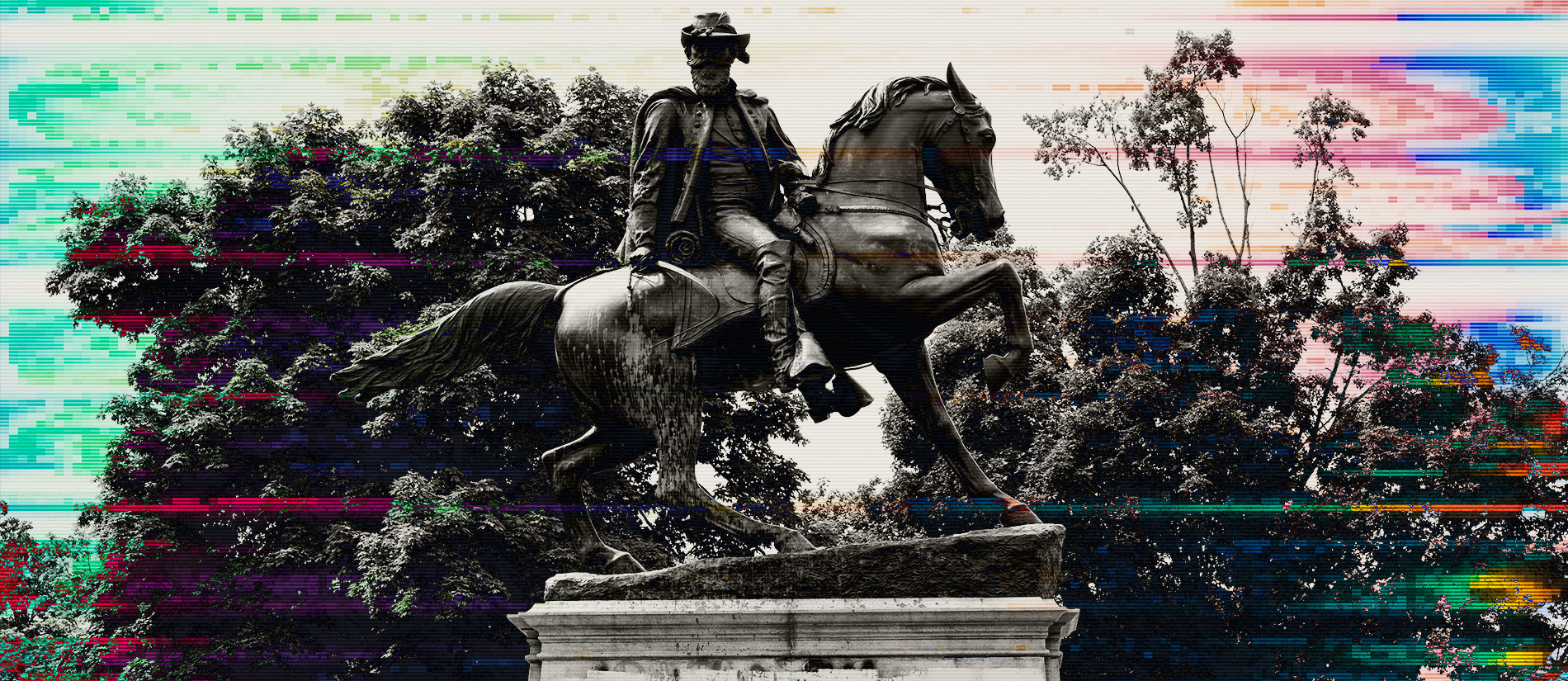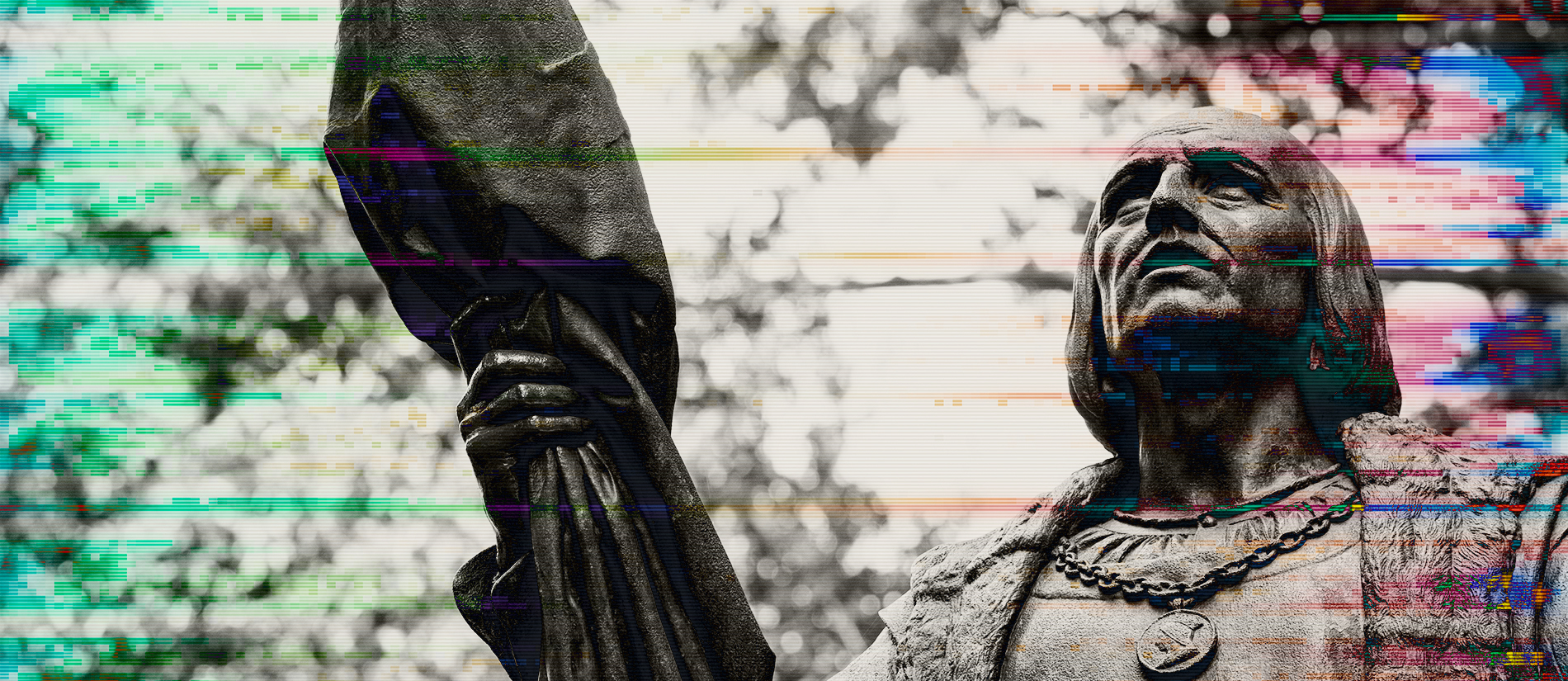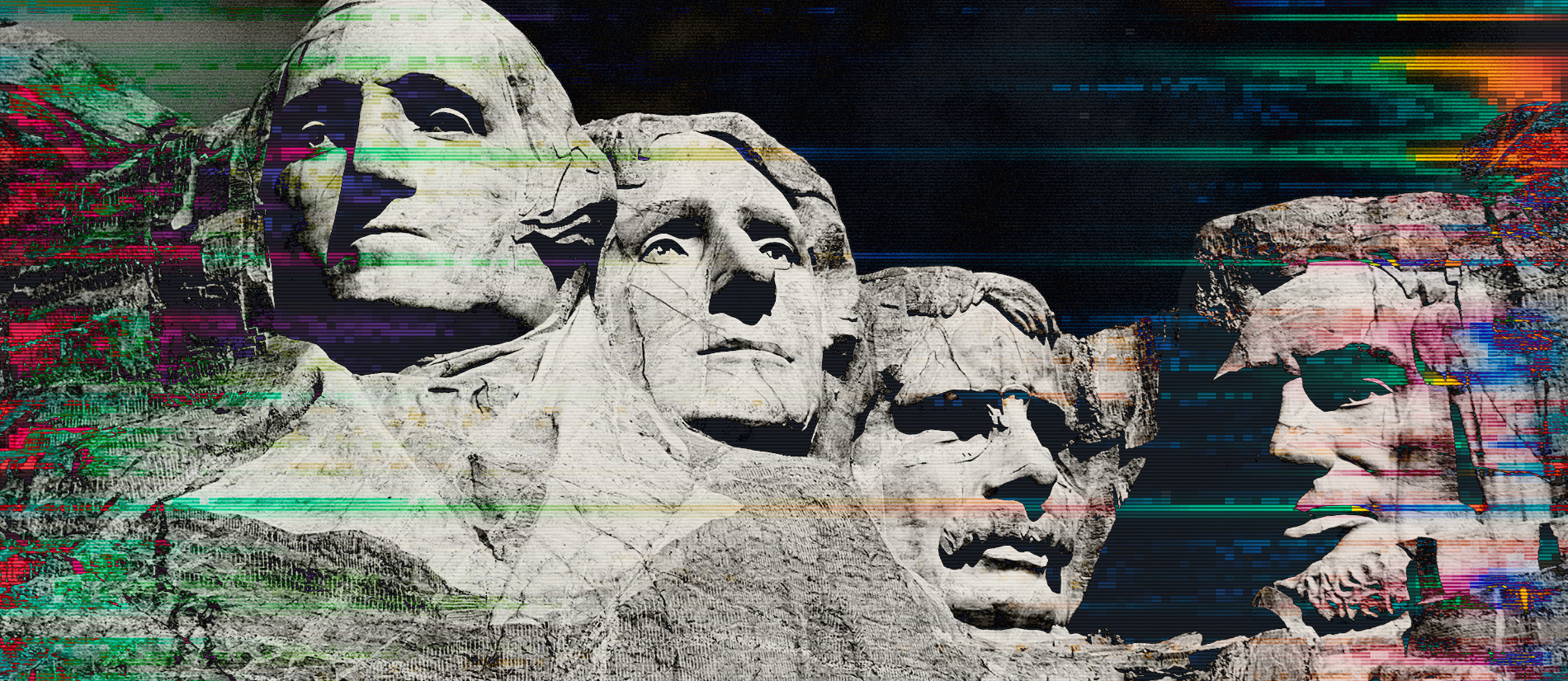Look around. It feels like the world is finally waking up. Protests spurred by the murder of yet another person of color by the police seem to have finally shaken the U.S. from its long racist slumber. Charges were filed, then upgraded. The Minneapolis PD is being de-funded. A global uprising is underway.
Never has there been a clearer metaphor for this movement than statues with bloody, painful histories being graffitied and torn from their plinths. Usually, these removals happen after years, sometimes decades of debate by city councils. No more. The people are taking power into their own hands. Chopping off Columbus’s head and casting slave traders into the sea. Rapidly unlearning their long-held reverence for the people who helped create our institutionally racist system.
Is this dramatic, direct action going to solve everything? No. But it sure sends a strong message. And it just may signal a larger sea change. Symbolism matters, after all. If it didn’t, the statues being torn down would have never been erected in the first place.
I’ve called for the removal of statues of racist colonizers in the past. I’ll call for it as long as they’re still standing. For me, it’s very simple. Revering people who we know were monsters is objectively awful. We have the gift of hindsight, so let’s use it. Our history is real, has real consequences, and hurts entire communities to this very day. And yes, most cultures have darkness in their history but most have the sense not to celebrate those people. Just try to find an enshrined statue celebrating the Nazi era in Germany. There aren’t any. You don’t have the Fox News-style contrarians saying, “But they built good roads!” The Germans built memorials to that era’s victims instead.
Let’s be clear: Saying Christopher Columbus was a great navigator isn’t enough anymore. We know he was a genocidal despot and one outweighs the fact that he was good at sailing. Not only did Columbus set in motion the greatest mass death and destruction of cultures in known world history with the colonization of the Americas and Caribbean, but he also helped bring about the Transatlantic African slave trade, which led to millions more deaths and the destruction of entire African cultures. That’s three continents worth of mayhem and generations of pain just so that churches in Rome or Madrid could have statues of Jesus made of gold. (I’m not even going to get into the brutality the man carried out himself.)
As the Bostoners who beheaded a Columbus statue in North End Park knew, there’s no valid reason left to celebrate a man who discovered the “new world” by irrevocably damaging the old one. Off with his head! Taking down a statue is the perfect symbolic start to the reformation our society needs to go through. They represent the proverbial tip of the miseducation iceberg that we’ve all been living atop for centuries. But for these dramatic actions to have a lasting effect will require us to go deeper.

Reeducating societies about their racist or even genocidal pasts isn’t anything new. Germans (and a lot of other Europeans) had to go through Denazification after World War II. South Africa has a program of Decolonization. This is something that’s recognized as a way to move forward in the spirit of reconciliation. It’s a way to deal with the painful pieces of the past that fester in the present. What we’re seeing now in the U.K. with the removal of statues of slave traders like Edward Colston is the foundation of that Decolonization education. Colston was responsible for over 80,000 slaves being shipped to the Americas and the deaths of nearly 20,000 at sea. And the wealth he created through the slave trade was pumped back into British society, which benefitted immeasurably. Meaning that as seaweed grows on the drowned statue, we also need to begin a fundamental shift in how we teach history, practice laws, and run the economy from top to bottom.
If you’re one of the people who thinks throwing a statue of Edward Colston into the sea is bad, wait until you find out about the 19,000 slaves who died whilst his company transported them to the Caribbean. pic.twitter.com/xahaC16G7E
— James Felton (@JimMFelton) June 7, 2020
It’ll be interesting to see how far the British people are willing to dive into self-reflection about their horrifically brutal colonial past in the Americas, Africa, and Asia. Will it include the crimes against humanity they inflicted upon the Irish for centuries? Outside of the UK, will the message of decolonization translate to societies like Portugal, Spain, Netherlands, and Belgium — who all have deeply rooted and horrific colonial histories of their own? Are the Lakota, Incas, Congolese, Hawaiians, and hundreds of other Indigenous nations going to get back the gold and silver that was stolen from them? How about long-overdue payments to Indigenous communities for the ore, timber, minerals, oil, fruits, land, and people that built European empires?
You want kids to learn history? Good. Me too. This is the ultimate teachable moment. They’re living through history. The new history books will write about this as a revolution of philosophy — when the old fables of European heroism were rewritten completely. The toppling of Columbus and his cohorts should be part of curriculae worldwide.

What does this process look like in the U.S.? Once the statues are gone and the streets have been renamed, we have to do the work to decolonize the American mindset. That’s harder than sawing the head off a statue. The myth of “America” is what protects systemic racism. The cops, politicians, and racists opposing this movement learned those behaviors — in no small part because of the education they received in the “greatest country in the world” taught them that they were the heroes over and over and over again for centuries.
Is it still their fault? Of course. But standard American history education and the entirety of pop culture sold them a lie about who we are as a nation. How far this movement can extend depends on how far the American public is ready to decolonize their mindsets. Would you be willing to give Tȟuŋkášila Šákpe (colonially known as Mount Rushmore) back to the Lakota? Can you look in the mirror at your history and recognize that “yes, some of the people I’ve been taught to revere were, in the end, the bad guys?” Because, spoiler alert, every face on the mountain was a bad guy, even in their own time. Moreover, that sacred mountain was stolen from the Lakota because it was sacred and therefore used to bolster American supremacy over Indigenous people (and built by an actual white supremacist).
If you can applaud the Belgians taking down King Leopold or Bostonians taking down Columbus but not see how Rushmore needs to come down too, then we’re not there yet. But if we can truly empathize with the pain that mountain causes people, there may be a chance to move forward together.
BREAKING: The Christopher Columbus statue at Byrd Park was taken down by protesters. This follows a call for its removal by demonstrators earlier today. The story is developing, we'll have more details as they come. pic.twitter.com/FLsEafHr58
— VPM (@myVPM) June 10, 2020
At a press conference in 2017, Donald Trump was asked about the removal of statues. He turned the question back on the reporters in the room. “What about Thomas Jefferson … What do you think of Thomas Jefferson? Do you like him?” To which an off-screen reporter answered, “I do love Thomas Jefferson.” Trump replied, “Okay, good. Are we going to take down the statue … because he was a major slave owner? Now, are we gonna take down his statue?”
If the people of this nation are taught their history, the answer will become a resounding “Yes!” because not only was Jefferson a slave owner who openly raped his slaves, but he’s also responsible for the “Extermination” policy against the Indigenous Nations the United States employed during their western expansion. He was a racist in action and philosophy. Weirdly enough, Trump actually made a ham-fisted point at that presser: Where are you, woke allies, willing to draw the line?
In my opinion, that line probably shouldn’t be at the old, rich, long-dead slave-owning genocidal leaders who helped create the broken system that’s killing us today. Maybe it’s time to replace those faces with people from our more progressive corners of history like Frederick Douglass, Laura Cornelius Kellogg, Lucy Stone, Malcolm X, Russell Means, Marsha P. Johnson, Yuji Ichioka, Jeannette Rankin, and so many others who put their lives on the line to make this country a better place.
Will that be hard? For some. Will it meet resistance? Absolutely. Progress isn’t easy. But it’s not impossible either. And that “long arc toward justice” we hear so much about? Perhaps this recontextualizing of history will prove to be another sign that it’s finally starting to curve.

You can reach Zach Johnston on Twitter or Instagram. You can also follow his work on Indigenous issues on Uproxx here.

